Lovely Lane Methodist Church
Lovely Lane United Methodist Church, formerly known as First Methodist Episcopal Church, and earlier founded as Lovely Lane Chapel is a historic United Methodist church located at Baltimore, Maryland, United States.
Lovely Lane United Methodist Church | |
.jpg) First Methodist Episcopal Church (Lovely Lane United Methodist Church), 1895. | |
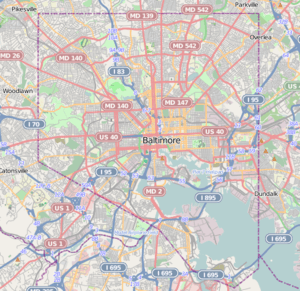 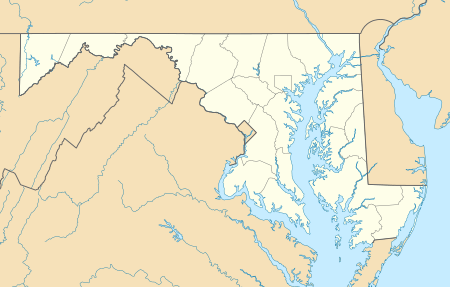  | |
| Location | 2200 St. Paul St., Baltimore, Maryland |
|---|---|
| Coordinates | 39°18′52″N 76°36′57″W |
| Area | 1 acre (0.40 ha) |
| Built | 1884 |
| Architect | White, Stanford |
| Architectural style | Romanesque |
| NRHP reference No. | 73002189[1] |
| Added to NRHP | May 25, 1973 |
The building on St. Paul Street and 22nd Streets in the Charles Village (then originally named "Peabody Heights") neighborhood in the northern area of the City, was designed by renowned New York City architect Stanford White, (1853–1906) in the Romanesque Revival style, and completed in 1884, as the "Centennial Monument of American Methodism". It is patterned after the early churches and basilicas in Ravenna, Italy. The exterior is constructed of a gray ashlar granite with limited ornamentation. It features a square bell tower patterned after the campanile of the 12th century church of Santa Maria, Abbey of Pomposa, near Ravenna. The pulpit is a reproduction of the one at St. Apollinaris, in Ravenna.
Locally influential architect Charles L. Carson was supervising architect for the McKim, Mead & White firm from New York City during construction of the church.[2] Lovely Lane Methodist Church was listed on the National Register of Historic Places in 1973.[1]
Lovely Lane Chapel
The congregation is known as the "Mother Church of American Methodism."[3] The original Lovely Lane Chapel or Meeting House was the scene of the December 1784 "Christmas Conference", at which the Methodist Episcopal Church in the United States was founded and Francis Asbury and Thomas Coke were ordained as its first bishops.
The plain original chapel on Lovely Lane, off German (now Redwood) Street, between South Calvert Street and South Street in the city's waterfront district, was abandoned in 1786 and demolished. It was replaced (first) by an elaborate beaux-arts structure of the Merchants Club, and now the building contains a teaching restaurant run by the Baltimore International Culinary College, now affiliated with Stratford University.
Gallery
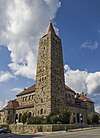 Exterior in 2012
Exterior in 2012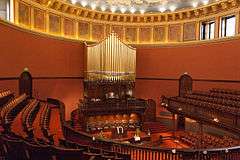 Interior of the First Methodist Episcopal Church, now Lovely Lane United Methodist Church on St. Paul Street.
Interior of the First Methodist Episcopal Church, now Lovely Lane United Methodist Church on St. Paul Street.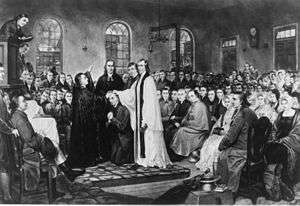 The Ordination of Bishop Francis Asbury at the December 1784 "Christmas Conference".
The Ordination of Bishop Francis Asbury at the December 1784 "Christmas Conference".
References
- "National Register Information System". National Register of Historic Places. National Park Service. July 9, 2010.
- Dorsey, John; Dilts, James D. (1997). A Guide to the Architecture of Baltimore (3rd ed.). Centreville, Maryland: Tidewater Publishers. pp. 396–397. ISBN 0-87033-477-8.
- Joyce Mcclay and Catharine Black (August 1972). "National Register of Historic Places Registration: Lovely Lane Methodist Church" (PDF). Maryland Historical Trust. Retrieved 2016-03-01.
External links
| Wikimedia Commons has media related to Lovely Lane United Methodist Church (Baltimore). |
- Lovely Lane Methodist Church, Baltimore City, including photo from 2004, at Maryland Historical Trust
- Lovely Lane United Methodist Church website
- Lovely Lane United Methodist Church – Explore Baltimore Heritage

